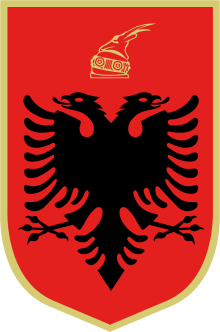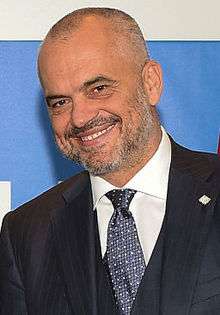Albanian parliamentary election, 2017
| | |||||||||||||||||||||||||||||||||||||||||||||||||||||||
| |||||||||||||||||||||||||||||||||||||||||||||||||||||||
| |||||||||||||||||||||||||||||||||||||||||||||||||||||||
| |||||||||||||||||||||||||||||||||||||||||||||||||||||||
 |
| This article is part of a series on the politics and government of Albania |
|
|
The next Albanian Parliamentary elections will be held in Albania in June 2017.
Electoral system
The 140 members of Parliament are elected from twelve multi-member constituencies based on the counties. Seats are allocated using the D'Hondt method with an electoral threshold of 3% for political parties and 5% for alliances.[1]
References
- ↑ Electoral system Inter-Parliamentary Union
This article is issued from Wikipedia - version of the 11/28/2016. The text is available under the Creative Commons Attribution/Share Alike but additional terms may apply for the media files.


%2C_in_a_meeting_with_OSCE_PA_staff_in_Copenhagen%2C_2_April_2014_(cropped).jpg)